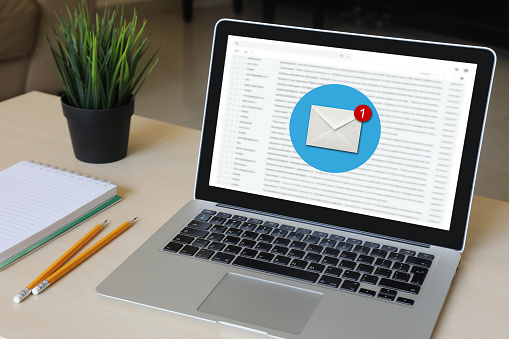
7 Best Email Delivery Tools for High Performance Email Marketing
Regardless Of Size, Companies Have To Stay In Touch With Their Prospects And Customers — Email Is Still The Best Way
 Like it or not, we’re all addicted to our email. We check it constantly. We have it in our pockets, in our cars and now on our TVs at home.
Like it or not, we’re all addicted to our email. We check it constantly. We have it in our pockets, in our cars and now on our TVs at home.
Most people make checking, sorting and dealing with email the first thing they do upon waking up or arriving at the office. This makes email marketing one of the most important campaign tactics in the marketer’s toolbox.
On the flip side, reaching people via email has never been more challenging due to the sheer number of emails, the crazy amount of bad emails and the workarounds we’ve created to deal with the massive amount of unwanted email in our inboxes.
What’s a marketer to do to make sure your emails cut through the clutter? We have ideas.
A massive amount of performance data on email marketing campaigns is available. Here are just my top data points to illustrate that email is alive and well, but it needs to be optimized, managed and strategically deployed.
- Up to 60% of email opens are on mobile, depending on the industry. (Campaign Monitor)
- Conversion rates for emails are higher than social media, direct traffic and search. (Smart Insights)
- Mapping out the customer journey and using personalized content are considered the most effective ways to optimize marketing automation. (HubSpot)
- Custom automation workflows have the highest click-through rates. (Ominsend)
- Personalized emails can produce a transaction rate 6x higher than those of other marketing emails. (Business 2 Community)
- Marketers who segment their email marketing campaigns noted as much as a 760% increase in revenue. (HubSpot)
- 58% of consumers check their email before doing anything else online. (OptinMonster)
- In North America, the average email open rate is 19%. (GetResponse)
- Personalized subject lines provide a 26% boost in open rates. (Campaign Monitor)
- 47% of recipients open emails based on subject lines alone. (OptinMonster)
- People spend 2.5 hours per weekday checking their emails. (Adobe)
1. Deliverability
If a tree falls in the woods and no one is there to hear it, does it make a noise? Emails that never make it to their intended audience are similar. It’s like you never sent the emails. This makes your ability to get your emails through spam filters, redirect folders, company firewalls and email management settings a top priority.
Email marketing is marketing 101 today. Every company should be running at least a monthly email marketing campaign to prospects and one to current clients or customers. Yes, these are different campaigns with different stories, offers and goals.
Delivering customer emails should be easier, and you should expect to have a 100% deliverability metric on all customer email marketing campaigns. That’s not to say you won’t have any issues, like soft bounces for people who are on vacation and hard bounces for people who have left the organization.
- Soft bounces – A soft bounce means that the email address was valid, and the email message reached the recipient’s mail server.
- Hard bounces – A hard bounce occurs when the message is permanently rejected either because the email address is invalid or the email address doesn’t exist.
Customer emails should be updated by your customer service team when people leave or change jobs. Again, you should expect a very high deliverability rate on customer emails, and if you’re not seeing that, you should consider a project to clean up your customer database.
Deliverability rates for prospect email lists should be between 95% and 99%. Your prospect list will degrade over time, and it’s almost impossible to stay up to-date with people who might have entered your list years ago.
You should monitor this metric, but it won’t often trigger any necessary action.
2. Avoiding Spam Lists
That brings us to the uncomfortable topic of getting flagged as a spammer. We’ve had to help a number of clients (they weren’t clients at the time) get off a spam list. If you’re on a list like this, you could see your entire internet services shut down by your provider (like Comcast or Verizon).
In addition, you could get an uncomfortable email from your email service provider. Clients that have (without our knowledge) loaded scraped or purchased lists into their HubSpot portal and then blasted emails have had their email privileges suspended. You don’t want to be in this position.
Email service providers have an obligation to shut down accounts that are mass-emailing people who have not given permission to be emailed, and all it takes is a handful of spam reports.
You need to follow all aspects of the CAN-SPAM Act of 2003, which was updated in 2009. The General Data Protection Regulation (GDPR) was passed in 2018 and affects Europe. There’s also the newly passed California Consumer Privacy Act (CCPA) law.
A great reason to work with an email marketing agency is that such agencies understand the rules and regulations as well as the limitations and requirements associated with all three of these legally binding rulings. If you violate any of these, you could face significant financial penalties.
3. Improving Open Rates
On a more positive note, let’s talk open rates. This is the number of people who are opening or previewing your email. That last note is important. If you have the preview pane on your inbox, those previews are considered opens, whether someone actually opens your email or not. Good to know, right?
While I hate averages (because they’re not relevant to your business, your prospects, your industry and your marketing program), we have to look at them as a data point to evaluate your own email marketing performance.
Typical open rates are between 20% and 30%. Please benchmark your own open rates and use that number as your baseline.
Open rates are all about your subject line. Your best bet is to stay away from the tricks, and instead work hard to come up with something that is disruptive, emotional and compelling.
4. Improving Click-Through Rates
As you might imagine, click-through rates show how effective your email is at getting people back to your website. The only goal of email marketing is to get your prospects back to your website.
Typical click-through rates are between 2% and 5%. Again, please benchmark your current metrics and use those as your baseline numbers. Each month you should be looking at your numbers and expecting to see even small progress.
Getting readers to click on your email links is about content and copy in the email. Keeping the copy short. People spend 20 to 30 seconds reading an email. Focus on just two or three links. Tell part of the story, and then let them click to hear, read or watch the rest of the story.
If it’s interesting enough, they’ll click through. You can also use email to promote content offers on your website. Now your emails are specific, with directed action steps (and the people who convert are looking for something specific).
5. Getting Shares And Forwards
You’re emailing your list, but you have a goal to grow the list. Most people think email is not the tactic for that, but if you craft a compelling, disruptive and emotional story in your email and encourage people to forward or share your email with others, you might end up getting additional net new email contacts from emailing your existing database.
This is easy – ask your recipients to share or forward. Most emails have share and forward buttons as options when building the email. When you remind people this is an option, we typically see these buttons used much more frequently.
6. Scheduling
One of the biggest issues with email is cutting through the clutter in all of our email boxes. Having a strong subject line helps, but delivery timing helps, too.
Every article says B2B emails should be sent Tuesday or Thursday at 10 a.m. This is old-school thinking. If everyone is sending their emails then, you can be sure your prospects are getting a ton of unwanted emails at that time.
You have to be smarter. Wouldn’t it be better to send emails when your recipients are apt to open them? This is where technology and artificial intelligence come in.
Use a tool like Seventh Sense to know when your audiences open your emails, and then stagger the send based on that data. If I open these emails at 7 p.m. on Saturday night, that’s when you should send an email to me. It’s now one-to-one, instead of one-to-many.
The open rates improve by a factor of almost 50%.
7. Automating Processes
When you consider the “right” way to do email, you have to start looking at segmentation of your email database. The smaller the groups, the more personalized and targeted the message can be. The tighter and the more effective the offer can be, the better the open rate and click-through rate will be.
This means you might have a list by industry, by role or by size of company. You might have a list based on the product or service you offer. Pretty quickly, you could have 10 or more lists and need 10 or more versions of every email you’re sending. The more personal, the better the results.
From above, marketers who segment their email marketing campaigns noted as much as a 760% increase in revenue. (HubSpot).
But all of this segmentation means complexity, and that’s where automation comes in. You should be building these emails, setting them to send, letting them run with automation and reviewing the results.
Automating emails frees you up to work on other campaigns, improving creativity in your campaigns and allowing you to do more performance optimization work. All of these high-payoff activities improve performance while your emails run in the background.

CEO and Chief Revenue Scientist
Mike Lieberman, CEO and Chief Revenue Scientist
Eliminate Hit-or-Miss Marketing Moves
Get advice, tips, tools and guidance to generate more leads for your company in this weekly email newsletter.



Eliminate Hit-or-Miss Marketing Moves
Get advice, tips, tools and guidance to generate more leads for your company in this weekly email newsletter.













